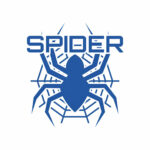Introduction
The world of fashion is evolving at an unprecedented pace. In 2025, two futuristic forces—embroidery digitizing and NFTs (Non-Fungible Tokens)—have come together to revolutionize how we create, sell, and wear fashion.
In this new era of fashion tech, embroidery is no longer limited to physical threads on fabric. Instead, we’re witnessing the emergence of digital embroidery assets, where unique stitch patterns are minted as NFTs and sold in virtual marketplaces or embedded into smart garments.
This article explores how embroidery digitizing is merging with blockchain technology to give birth to “Digital Threads”, unlocking new opportunities in custom design, wearable NFTs, and virtual fashion.
What is Embroidery Digitizing?
Embroidery digitizing is the process of converting a design, logo, or artwork into a digital file that an embroidery machine can understand. These files contain data on:
-
Stitch type (satin, fill, running stitch)
-
Stitch path and direction
-
Thread color sequencing
-
Machine commands for hoop movement
File formats include .DST, .PES, .JEF, .EXP, and others, depending on the brand of embroidery machine.
In traditional contexts, embroidery digitizing is used by apparel manufacturers, sportswear brands, merchandise creators, and home-based embroidery businesses.
What Are NFTs and How Do They Relate to Fashion?
NFTs are blockchain-based assets that represent ownership of a unique digital item—this could be artwork, music, video, or even a design pattern.
In fashion, NFTs are being used for:
-
Selling virtual clothing in the metaverse
-
Authenticating limited-edition real-world apparel
-
Creating exclusive digital artwork stitched into smart wearables
-
Offering digital ownership of embroidery designs
Now imagine a digitized embroidery file being minted as an NFT. The buyer owns exclusive rights to that stitch pattern—either for digital display or physical application.
The Emergence of “Digital Threads”
“Digital Threads” are embroidery digitizing files that are tokenized as NFTs. They may include:
-
Exclusive logos
-
Cultural or artistic embroidery
-
Signature fashion patterns
-
Brand mascots in stitched formats
These files can be purchased, traded, and licensed digitally, much like royalty-free music or stock photos. Some may even contain embedded licenses allowing buyers to use them commercially for limited quantities.
How Does This Merge Work Technically?
Let’s break down the system:
1. Create the Embroidery File
Using digitizing software like Wilcom, Embrilliance, or Ink/Stitch, a designer converts a visual into a high-quality stitch file.
2. Mint the NFT
The digitized file is minted on a blockchain (Ethereum, Solana, or Polygon), either as a downloadable file or integrated into digital garments.
3. Sell in NFT Marketplaces
The NFT is listed on platforms like OpenSea, Rarible, or fashion-specific markets like The Dematerialised.
4. Apply to Physical or Virtual Garments
Once purchased, the owner can:
-
Use it for custom embroidery on physical products
-
Integrate it into digital wearables for avatars (metaverse fashion)
-
License it to brands or creators
Why This Matters for Embroidery Digitizing Services
Digitizing services can now:
-
Offer NFT minting as an add-on
-
Create exclusive, royalty-based stitch designs
-
Expand business into virtual fashion and Web3
-
Reach global markets without physical delivery
This opens new monetization paths for embroidery digitizers beyond traditional apparel.
Real-World Use Cases in 2025
🎨 Digital Fashion Designers
Selling 3D hoodies with embroidered NFT badges worn in virtual games.
🧵 Custom Digitizers
Creating one-of-a-kind embroidery logos for streamers, creators, and e-sports teams.
👚 Sustainable Brands
Issuing NFT-backed embroidery patterns that prove authenticity and originality.
🧠 AI-Generated Embroidery NFTs
AI tools like MidJourney, DALL·E, and Runway ML are used to generate original designs that are then digitized and sold as NFT art.
Key Benefits of NFT-Backed Embroidery Digitizing
| Benefit | Description |
|---|---|
| Global Exposure | Sell to buyers worldwide via digital marketplaces. |
| Zero Shipping | Files delivered instantly—no fabric or thread needed. |
| Immutable Ownership | Blockchain ensures design authenticity and originality. |
| Recurring Revenue | Creators can earn royalties on secondary sales. |
| Custom Licensing | Issue usage terms with every NFT transfer. |
Tools & Platforms Powering This Revolution
-
Wilcom EmbroideryStudio – Leading embroidery digitizing software
-
Opensea – NFT marketplace with metadata flexibility
-
Ready Player Me – For virtual avatars wearing embroidered fashion
-
The Dematerialised – NFT fashion marketplace
-
Metafactory – Community-owned fashion creation platform
-
Adobe Illustrator + Vectorizer.AI – To prepare clean vector input for digitizing
Challenges and Considerations
| Challenge | Solution |
|---|---|
| File piracy | Use encrypted delivery or gated content in NFT smart contracts |
| Tech adoption | Offer simple tutorials for buyers new to embroidery or NFTs |
| Market education | Run workshops or host YouTube explainers |
| Format limitations | Offer bundles (.DST, .PES, .JEF, .SVG) in every NFT |
The Future of Embroidery Digitizing in Digital Fashion
By 2030, we can expect:
-
AI-Generated NFT Embroidery Packs sold as limited collections
-
Digital Embroidery Plugins for AR Fashion Apps
-
Embroidery-Backed Avatar Customization in games like Roblox or Fortnite
-
Decentralized Marketplaces for digitizers with auto-royalty smart contracts
-
Wear-to-Earn Programs where virtual wearables generate income through exposure
Final Thoughts
The blend of embroidery digitizing and NFTs is a groundbreaking shift in both fashion and technology. For digitizing professionals, this is a chance to step into the future — from local embroidery shops to global digital art platforms.
If you’re an embroidery digitizer or a brand looking to explore Web3-powered customization, start exploring NFT integrations, blockchain file management, and digital marketplaces now. The future of embroidery isn’t just stitched — it’s minted.
